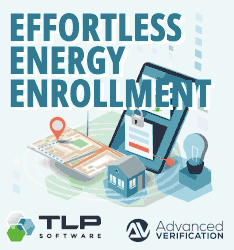|
|
|
|
|
Retail Suppliers Unknowingly Could Be Exposed To Violating State's Price Cap Due To Utility Implementation
The following story is brought free of charge to readers by VertexOne, the exclusive EDI provider of EnergyChoiceMatters.com
Retail suppliers unaware of how a Connecticut utility is implementing a new process to ensure that hardship customers do not pay more than the default service rate could open themselves to exposure for alleged violations of a statutory provision requiring that contracts with hardship customers shall be at a rate which does not exceed the standard service rate
As previously reported, Conn. Gen. Stat. § 16-245o(m) allows hardship and similar customers to take service from a competitive retail supplier provided that, "all customer contracts with electric suppliers, for rates effective
on and after January 1, 2024, shall be at or below the standard service rate for the duration of the
contracts."
The language of the statute provides that the suppliers' "contracts" shall be at or below the standard service rate, but is silent as to the actual rate the customer may (temporarily and subject to refund) be charged, and which entity is responsible for ensuring that the actual rate charged on a bill (even if later re-billed or refunded) does not exceed the standard service rate
As previously reported, the Connecticut PURA in April 2024 issued an interim decision which generally adopted the EDCs' proposals to ensure that hardship customers do not pay more than the standard service rate.
PURA's interim decision generally adopted EDC proposals as contained in a working group report. PURA's interim decision, and the working group report itself, did not discuss certain timing issues related to mid-contract drops to standard service, and the implications of such
The working group report had said, "the EDCs are willing to monitor
supplier rates charged to hardship customers daily and to return customers to standard service if
the supplier is charging the hardship customer a rate that is above the standard service rate."
An issue has been revealed with respect to how United Illuminating is executing this process
The October 2023 working group report had noted that UI will modify its billing system to perform automated, nightly checks of supplier rates versus the standard service rate
The working group report stated, "The customer will be returned
to standard service if the supplier rate exceeds the standard service rate at the time of billing."
It was unclear if specific timing issues of when the drop would occur, and, more importantly, when the drop would be effective, such as back-dating the drop to the prior meter read, was discussed among parties in the working group, but such issues were not specifically detailed in the working group report
However, multiple parties, at the time the workgroup report was issued, understood that the process outlined by the EDCs would ensure that hardship customers are never billed more than the standard service rate, because any drop would have the effective date be set retroactively as the most recent meter read
PURA's Office of Education,
Outreach, and Enforcement (EOE), in October 2023 comments on the work group report, had said, "EOE understands that the EDCs’ proposal, because it performs daily sweeps,
returns hardship customers to standard service daily to prevent them from being billed at
a supplier rate greater than the standard service rate in effect at that time." [emphasis added]
EOE had further said in October 2023 that, "the EDCs’ proposal drops the customer from the supplier contract the
moment the price exceeds standard service," and that, "It is EOE’s understanding that this proposal would not result in hardship customers being billed at a
rate greater than the standard service rate."
Additionally, the Retail Energy Advancement League (REAL) had, in October 2023 comments on the working group report, described the EDCs' process as follows: "If the standard service rate
or a customer’s hardship designation changes such that the supplier’s price for the hardship customer is or
will no longer be at or below the standard service rate, then the daily EDC monitoring will flag that and the
customer will be dropped to standard service effective as of the last billing cycle."
REAL in October 2023 had stated, "The hardship customer
will never be billed on the higher price and the supplier will have served them at or below the standard
service rate for the duration of the contract." [emphasis by REAL]
Making the drop to default service effective as of the customer's last meter read is, in fact, how Connecticut Light & Power has generally implemented the process (except in cases where it is more advantageous for the customer to keep the supplier rate for a part of the new billing period, due to the billing period covering two distinct standard service pricing periods, see discussion here
However, at United Illuminating, UI has revealed that there are situations in which a hardship customer could be billed a retail supplier rate in excess of the standard service rate, as UI's drops are effective as of the customer's next meter read
UI said today in a data response that UI’s billing system does not allow for backdating of a supplier drop during the current month
billing cycle. UI's process does not allow for the supplier drop to take place retroactive
to the previous meter read date.
Under UI's process, if a customer’s last
meter read date was May 20, and UI found the supplier's rate exceeded the standard service
rate on June 1 and the next meter read date is June 20, the return to standard service would take effect on June 20
Furthermore, UI said that, "In cases, where a supplier rate increases [sic] less than 2 days prior to the next meter read date, the
standard [sic] rate will take effect with the following meter read." In this example, the default service rate will
begin on the July meter read and would appear on the August bill
In response to a data request from the Office of Consumers Counsel about issues that UI would face if UI adopted CL&P's process, UI said, "With UI’s current billing system, the
Company would have to wait for the supplier drop to take effect on the next meter read date
then after the new bill is created, cancel the bill and rebill the customer at the standard
service rate. This would also require manual work to reverse the billing document with the
higher supplier rate and rebill at the lower standard service rate. As a result, customers would
experience a delay in receipt of their bills, overlapping due dates for bills."
UI confirmed in a data response that, under its process, there are two situations in which UI bills a hardship customer at a rate greater than the current standard service rate:
1. When the standard service rate drops on July 1, the portion of the customer’s billing
cycle after July 1 will be billed at the higher rate until the supplier is dropped on the next
meter read date
2. When a non-hardship customer with a higher supplier rate becomes a hardship customer in
the middle of a billing cycle, the customer will continue to be billed at the higher supplier
rate until the next meter read date
UI's response discusses issues, including the issuance of multiple bills within a typical single bill 30-day period which may cause customer confusion, that would arise if UI instead used an out-of-cycle bill process
Furthermore, UI cited negative impacts to certain customers if an out-of-cycle bill were issued. "Additionally, customers enrolled in a Flexible Payment Arrangement, MPP, BFP, or
Budget Billing receiving an 'out of cycle' bill would receive a bill for an extra
installment or budget amount due on both their out of cycle bill and on-cycle bill for
that billing period. With UI’s current billing system, in order to correct an account
that was billed two installments or budgets within a month, the account would need to
be removed from the current program and reinstated. For customers, enrolled in
Budget Billing, BFP, and MPP would have to wait an additional full billing cycle to
be placed back on their program. Further, Budget Billing customers would have to
pay their full actual balance to be placed on a new budget. The Company reviewed
the first three July billing cycles and found that approximately 30% of customers are
enrolled in one of the programs stated above," UI said
It was not clear from UI's data responses if any future adjustments or credits (e.g. a process outside of a standard cancel/rebill) are made to hardship customer utility bills to compensate the customer for being billed in excess of the standard service rate, nor is there a discussion of whether retail suppliers would be expected to issue credits to appear on a future utility consolidated bill, or of suppliers otherwise receiving information from the EDC concerning any over-charging in order for the supplier to separately (off-bill) issue refunds
UI is continuing to develop cost estimates for reprogramming UI’s billing system to reflect
CL&P's timing. Statute makes retail suppliers responsible for any costs of billing system changes to implement the hardship price cap
As noted, PURA adopted UI's process in an April 2024 interim decision, although it was not clear if the specifics, including the potential for hardship customers to be billed more than standard service, were fully appreciated at such time
Moreover, although PURA itself has not yet endorsed such a view (as of yet), PURA's Office of Education,
Outreach, and Enforcement (EOE) has said that suppliers are ultimately responsible for compliance with § 16-245o(m)'s provision that a supplier's "contract" with a hardship customer shall not include a rate that exceeds the standard service rate
EOE has argued that this provision also prohibits the billing of hardship customers, by suppliers, of a rate higher than default service
"If the suppliers may not
have contracts with hardship customers for a rate greater than the standard service rate, then suppliers
certainly may not bill hardship customers at a rate greater than the standard service rate," EOE said in October 2023 comments on the work group report
While retail suppliers may include a provision in their contracts for the contracts to be automatically void upon either (1) a customer newly receiving status as a hardship customer and the current contract rate exceeding the default service rate, or (2) for hardship customers, the standard service rate changes and exceeds the contract rate, which would comply with the law's prohibition on a "contract" exceeding the default service rate, the manner in which UI has implemented the automatic process to drop applicable hardship customers to default service could leave suppliers open to allegations that suppliers have "billed" hardship customers a rate that exceeds the standard service rate
Docket 18-06-02RE02
ADVERTISEMENT ADVERTISEMENT Copyright 2024 EnergyChoiceMatters.com. Unauthorized copying, retransmission, or republication
prohibited. You are not permitted to copy any work or text of EnergyChoiceMatters.com without the separate and express written consent of EnergyChoiceMatters.com
July 18, 2024
Email This Story
Copyright 2024 EnergyChoiceMatters.com
Reporting by Paul Ring • ring@energychoicematters.com

NEW Jobs on RetailEnergyJobs.com:
• NEW! -- Director, Load Forecasting
-- Retail Supplier
• NEW! -- Origination Analyst
-- Retail Supplier
• NEW! -- Wholesale Markets Analyst -- Retail Supplier
• NEW! -- Billing Supervisor
• NEW! -- Settlements Analyst
-- Retail Supplier
|
|
|
|







